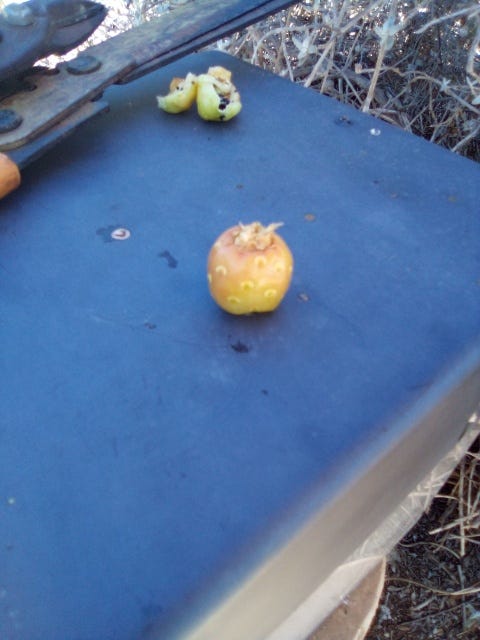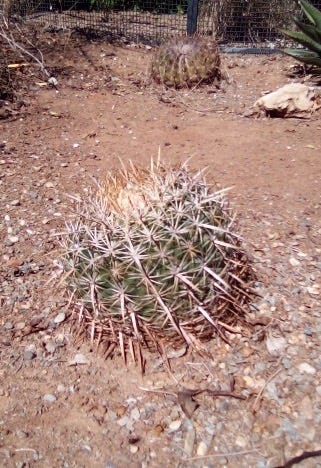In Touch: San Diego barrel cactus
My life in gardening with another rare and endangered species
Way back, years ago, I conducted native plant hikes. It could be a real joy—particularly in spring, with all the fresh greenery and flowers—to share the wonders of the coastal sage scrub and maritime chaparral that cover the hills and canyons close to where I live in southern California. One Saturday, on a morning plant hike, my group and I ran across a San Diego barrel cactus, a truly rare find.
I was pretty excited as I explained that the small succulent at our feet was a pretty rare sight, so much so that the California Native Plant Society classifies the San Diego barrel cactus (Ferocactus viridescens) as a 2B.1 plant, a species that is “rare, threatened, or endangered in California but may be common elsewhere.” I went on the say, “You won’t find many of these cacti because we have paved over so much of their natural landscape, turning habitat into freeways and shopping malls.” I said that we need to pressure our elected officials to ensure that we hold onto the little remaining open space that we have in our county.
Satisfied that I had imparted some notion of the preciousness of this cactus, I went to go farther down our pathway. As I did, my shoe caught the cactus, uprooting it.
For some folks endangering the life of a member of an endangered species might not mean much, but for me, it is an anxiety provoking, chew my nails, need-to-go-to-therapy crisis.
We wound up placing the cactus back in the ground as it was. I never went back to double check on it, but I hope that it rerooted. Cacti can be very good at that. I’ve wound up successfully transplanting cacti with little finesse, just dig up the cactus and drop in into another hole in the ground, and the plant will reroot, needing little care.
With my work at the small zoo in Chula Vista, I now garden with San Diego barrel cacti. A lot of the sages and sunflowers in our landscaping are suffering—becoming stunted or not fully flowering—because of our years-long southern California drought. Not the barrel cacti. Even in these tough times they need zero care and zero watering. And they bloom just fine.
The San Diego barrel cactus, also called the coast barrel cactus, grows in the northern Baja peninsula, but the only place it naturally occurs in the U.S. is the coastal side of San Diego County, the dry but cool mesas and canyons from the Pacific coast to about ten miles inland.
These cacti never get very big, not more than a foot in height, and most of them wind up being wider than they are tall. They are ribbed, kind of like little round, green accordions. This allows them to expand and store water during wet times
.
They put out bright yellow blooms in June and July, and from what I’ve been able to gather, are pollinated by a single species of moth, the Yosemitia graciella (I don’t know a common name for this moth. I don’t even know if I’ve ever spotted it.) The flowers develop into small, juicy fruits, that are about the size of small strawberries. These fruit can stay atop the cacti for weeks or sometimes months

.
Inside the fruit are the seeds, tiny and black and almost identical in appearance to poppy seeds. Propagating the cactus is easy. Just remove the seeds from the fruit and let them dry out for a couple weeks. You can then spread them on a bed of potting soil. Keep the potting soil moist, and you should see cactus sprouts in ten days to two weeks. Patience is the ultimate requirement after that, as the barrel cactus is slow growing.
I don’t know why, but for some reason a barrel cactus will sprout clones sometimes. You can pry these off with a shovel, and just plant the clones somewhere else. I’ve successfully done this a number of times.
Of course you can order coast barrel cacti from nurseries. Nursery availability means that these cacti are probably growing as ornamentals in people’s yards in Arizona, Texas, who knows where else. So something oh so rare in its native landscape might wind up thriving far, far away.
For more environmental science & news follow me on Twitter @EcoScripsit.







I found a small population in the open space behind Kate sessions park
erwf